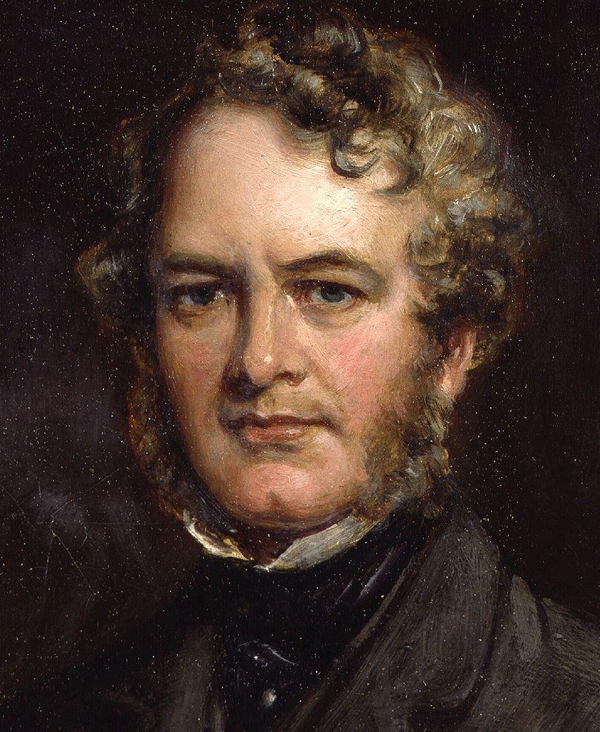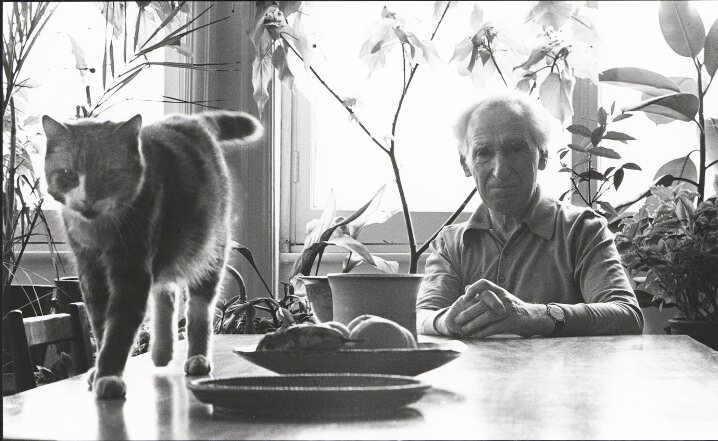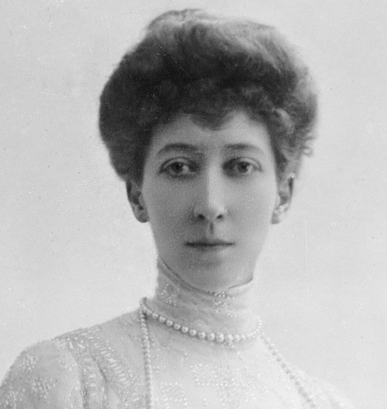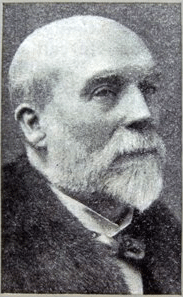A B C D E F G H I J K L M N O P Q R S T U V W X Y Z
Click on any portrait to view (opens in new window)
1790-1869
Born in Poole and growing up in Wimborne Minster, Dorset, he settled in Manchester, where he built up a large coaching enterprise with 1,200 horses on the road and a contract for the royal mail. But when the railways arrived he moved into that business as a director of the London & South-Western Railway and chairman of the East Anglian Railway. As an engineer he had a specialisation in bridge-building. He was Whig MP for Bodmin 1847-1852. In 1861 he took a lease on an eight-acre site on the east side of London Road and built Withdean Hall. He died at Withdean and is buried in the churchyard at All Saints, Patcham, leaving 'effects under' £40,000. His widow also died at Withdean in 1875 and his daughter married Sir Richard Baggallay PC QC MP.
• Withdean Hall, The Approach [residence 1861-1869]
1850-1925
Born in Brighton, his father was a jeweller and his mother, widowed by 1861, a watch-maker. His birthdate varies between 1850 and 1855; however, he is definitely present, aged one, in Census1851. He painted numerous images of Brighton and surrounding areas. Unmarried, he lived with family members, mostly next door to Henry Earp. Nine of his works are in the Brighton & Hove Museums collection and can be seen here.
• 18 Cranbourne Street [1851-1880, probable birthplace]
• 3 Clifton Road [1881-1887]
• 12 York Villas [1889-1920]
1877-1970
Born in Brighton, the son of a railway engine driver, he was educated at York Place Higher Grade School, which he left in 1892. His apprenticeship was served at the Regent Foundry for five years, while attending Brighton Technical College, gaining first class honours as silver medallist in 1909. After which he spent two years on the maintenance staff at the Brighton Corporation Electricty Works, then 1½ years at Coburg in Ditchling Road, working on circular looms. For three years he was foreman at the [Monk &] Lonsdale Motor Company, where he designed and built the two-seater Lonsdale car in 1900-1901. He then spent 10 years in charge of the motor repair department of Hammond & Sons in Hove. He was examining engineer for all Hove's public service vehicles and in charge of motor engineering classes at the technical college. He qualified as an associate member of the Institute of Mechanical Engineers in 1912, at the time of setting up his own business. Between 1914 and 1916 he designed and built the Old Mill 10hp car, of which 13 were made, named after the mill which had stood opposite his works on the south side of Highcroft Villas; it incorporated the novelty of a self-starter. He left Brighton to live in Poynings by 1944. He also experimented with motor-assisted pedal cycles and in 1946 the firm manufactured eight-foot long brass binoculars enclosed in a plywood case and wooden mount.
• 10 Clyde Road [family residence 1891-1901]
• 99 Addison Road [residence 1911-1912]
• The Old Mill, Highcroft Villas [garage, showroom]
1802-1873
 Victorian animal painter.
Victorian animal painter.Designed the lions around Nelson's Column in Trafalgar Square, London. Reportedly lived in Queensbury Mews in 1841.
Portrait by Sir Francis Grant
• Landseer Road
PERSONAL
• 65-66 Queensbury Mews [residence 1841]
1910-1999
 Cricketer.
Cricketer.'One of the best English cricketers of the 20th century never to play a Test match.'—Wisden. Played for Sussex from 1928 to 1955, scoring over 34,000 runs as opening batsman and taking 784 catches in his career, including 69 in his last season, the sixth large number ever. After retiring, he became a first-class umpire and stood in seven test matches and eight one-day internationals.
• Langridge Drive
1798-1844
Arrested for the theft of a carpet in St James's Street, he murdered Brighton's first chief constable, Henry Solomon, while being questioned in the latter's office by striking him over the head with a poker. He was hanged at Horsham.
It is conjectured that he was the person of that name who had previously been convicted in 1816 for larceny and given a six-week sentence1, in 1827 for offences against the game laws and sentenced to one month2, in 1828 again for offences against the game laws and sentenced to 12 months3 and convicted again in 1834 for larceny and transported for seven years4. This needs to be confirmed.
• Brighton Town Hall (police station), Bartholomews
1England & Wales Criminal Registers, Sussex, 1816
2England & Wales Criminal Registers, Sussex 1827
3England & Wales Criminal Registers, Sussex, 1828
4England & Wales Criminal Registers, Sussex 1834
1817-1864
 Illustrator.
Illustrator.Punch cartoonist from the first edition in 1841 until his death, he was a friend of Charles Dickens, who visited him.
Image: Self-portrait.
• 16 Lansdowne Place [lodgings 1849]
1874-1954
Born in Mile End, London, his real name was Ernest Hart Higgins. Working in variety theatre, in 1899/1900 he became the manager of the Alhambra Opera House and Music Hall in King's Road and remained there until 1905, when he left to become the manager of the Canterbury Music Hall in Lambeth. He played the missionary in James Williamson's film Attack on a Chinese Mission—Blue Jackets to the Rescue (1900). He joined the Drury Lane masonic lodge in 1904. He was sued for divorce in 1910 on the grounds of his adultery with music hall artiste Dolly Elsworthy, aunt of Michael Redgrave. He was subsequently manager of the Empire Theatre (now the Mayflower) in Southampton, which opened in 1928. He died at Hounsdown, near Southampton.
† Alhambra Opera House and Music Hall, King's Road
1917-1997
 Theatrical and film producer.
Theatrical and film producer.Produced some of the most important British films of the 1960s. In 1952 he became general manager of London’s Royal Court Theatre and in 1956 co-founded the English Stage Company, which was central to the ‘new wave’ of English theatre—its third production was John Osborne’s Look Back in Anger. He became a director of Woodfall Film Productions, for which he produced a number of films that epitomised the freewheeling spirit of the times. He also had his own production company for The Bed Sitting Room.
• 9 Western Esplanade [childhood home 1920-1928]
• 11 Western Esplanade [residence 1972-1997, deathplace]
1884–1973
Born in St Brides, Glamorgan. He was director of Army Postal Services 1921-1935. He chaired the Commission on the Civil Service of the Gold Coast (1950-1951). A road is named after him at Inglis Barracks, Mill Hill, London.
• Flat 2, 243 Kingsway [residence 1964]
• Flat 7, 37 Adelaide Crescent [residence 1973]
1889–1992
 Suffragette and women's rights campaigner.
Suffragette and women's rights campaigner.Née Simmons, she was born in Windsor, fourth daughter (seventh child of eight) of an antiques dealer. She became a vegetarian in 1899 and joined the suffragettes with her mother in 1907. She was active in Bristol and served two months in Holloway for throwing a stone through a window at the War Office— about which she spoke in a BBC Two interview in 1989. Nonetheless, during the First World War she made anti-aircraft shells at Battersea Power Station and kept a boarding house. In 1918 she married a suffrage supporter, Major Alexander Lidiard, they both trained as opticians and opened separate practices in Maidenhead and High Wycombe. She became a campaigner for animal welfare and the ordination of women. She worshipped at St John's Church and was the author of Christianity: Faith, love amd healing (1985) and Animals and All Churches (1987). The plaque in suffragette colours was unviled in 1996 by the then Speaker of the House of Commons, Betty Boothroyd. She left £142,237.
• 3 Derek Avenue [residence 1960-1961]
• Flat 1, 14 Palmeira Avenue [residence 1965-1992]
1792–1854
 Cricketer.
Cricketer.Born at Westhampnett, West Sussex. His first recorded cricket match was at Goodwood Park in 1822. He came to Brighton in 1825, the year he made his debut for Sussex. He was a pioneer of the roundarm bowling style, playing for Sussex and from 1830 also played for the MCC. In each season 1842-1844 he took over 100 wickets. He died in Islington and is buried in Highgate Cemetery. His sons John Lillywhite (1826-1874) and Fred Lillywhite (1829-1866) were also crickets, Fred founding the firm of sports outfitters and equipment manufacturers.
Image: Portrait by John Corbet Anderson, 1854
• Royal Sovereign, 65-66 Preston Street [lessee 1837-1844]
• Lillywhite's Ground, Temple Fields
1845-1927
 English tenor.
English tenor.Born in Lambeth, the son of a professor of music, he was a chorister at Westminster Abbey and then for two Cambridge colleges. He became the leading tenor of his generation, creating many of the leading roles in oratorio and the concert repertoire. He had retired in 1901 and settled in Worthing but sang at the coronation of George V in 1911. In 1907 he cut the first ceremonial sod for the Gramophone Company's new factory and studios at Hayes, Middlesex. Several of the recordings he made for the company between 1904 and 1911 are available on YouTube. He owned 30 and 31 Medina Villas (1907-1911)
• The Lodge, 43 Medina Villas [residence 1887-1896]
• 33 New Church Road
1861-1936
 Politician, businessman and garden creator.
Politician, businessman and garden creator.MP for Brighton 1889-1905, he was first elected in a by-election on 25 October 1889 on the death of William Robertson until his own elevation as Lord of the Treasury caused a by-election on 5 April 1905. The seventh child and fourth son of Sir Robert Loder, 1st baronet (1823-1888), deputy lieutenant for Sussex and MP for New Shoreham until 1885. In 1903 he bought Wakehurst Place and created the famous gardens. He was president of the Royal Horticultural Society and the Royal Arboricultural Society and was later created 1st Baron Wakehurst of Ardingly in 1934. He was a director of the London, Brighton and South Coast Railway from 1892 and chairman of its successor, Southern Railway, in 1932.
• Loder Road
PERSONAL
• 23 Brunswick Terrace
† Abinger House, 142 King's Road [residence c1891-1936]
1854-1935
He succeeded to the marquisate on the death of his elder brother in 1925, also acquiring the titles of 7th Baron Tottenham, 6th Viscount Loftus of Ely, 6th Earl of Ely, 6th Baron Loftus of Long Loftus, Co York, and 6th Baron Loftus of Loftus Hall, Co Wexford.
• 4 Alexandra Villas [residence 1907-1910]
• 21 Alexandra Villas [residence 1905-1918]
1867-1931
 Royalty.
Royalty.Third child and eldest daughter of Edward VII, granddaughter of Queen Victoria and Christian IX of Denmark. Declared Princess Royal by Edward VII in 1905. She married Alexander Duff, 6th Earl of Fife in 1889.
• 1 Lewes Crescent (Fife House) [residence 1896-1924]
1846-1912
 Coal merchant and local politician.
Coal merchant and local politician.Born at Benton, Northumberland, he began work in the collieries. He married in 1867 and came south to set up as a coal merchant in London, becoming a councillor for Preston ward in 18841 until his death, hastened by a fall when visiting an electricity power station. He was on the board of the Waterworks Committee and one of the water pumping engines at Falmer is also named after him. A staunch Primitive Methodist, he had 14 children. A commemorative plaque to him is at London Road Methodist Church.
• Lowther Road
PERSONAL
• 41 Ditchling Rise [residence]
1"Mr. Edward Lowther." The Times 8 July 1912:9
1916-1979
A Brighton councillor for Preston Park ward and mayor of Brighton in 1973/74.
• Lucraft Road
PERSONAL
• 30 Wilbury Crescent [residence]
1918-1995
 Actress and film director.
Actress and film director.One of the few women who got to direct films in Hollywood in her day. Born into a celebrated theatrical family—her father was Stanley Lupino, who had a bungalow in Bungalow Town at Shoreham, and her aunt was Nell Emerald—she went to a boarding school in Hove while her parents were in America. Her first acting roles were at Hove Town Hall and the Hippodrome, Brighton. She appeared in nearly 50 films from 1931 and in many of the top television series from 1954, for which she also directed upwards of 50 episodes. Her first credited feature film as director was Never Fear (1949), which she also wrote and produced for The Filmakers [sic], the independent production company formed with her then husband, Collier Young. She directed six more by 1953, specialising in social issues, after which most of her work was for television, with a final feature film outing in 1966.
• Clarence House School, 4 Norman Road [education]
1772-1863
 Politician.
Politician.Three times Tory Lord Chancellor and friend of Sir Isaac Lyon Goldsmid, who was influential in passing the Jewish Disabilities Removal Act 18451.
• Lyndhurst Road
1Carder (1990)
1872-1934
 Pioneer cinema exhibitor and local councillor.
Pioneer cinema exhibitor and local councillor.He opened the Academy Cinema in West Street, Brighton in 1911 (when he was working as a commission agent). He formed the Biocolor cinema circuit, which was sold to Gaumont. He was a director of the largest cinema operator, Denman Picture Houses, from 1928, and was one of the partners in the Astoria in Gloucester Place, Brighton in 1933—first of a planned chain of Astorias: a second opened at Purley, Surrey in April 1934 and a third at Cliftonville, Kent five days before Lyons’ death. There had also been unfulfilled plans for an Astoria at Worthing. As a Brighton councillor he was a prime mover behind the scheme in 1925/26 to establish a British National Film Studio in Brighton. He was a councillor for Patcham ward (1935).
• 8 Sillwood Road [residence 1911-1918 ]
• 35 Brunswick Terrace [residence 1919-1927]
† Hatch Beauchamp, London Road [1929-1934]
1895-1964
One of the partners in the New Bio Company (‘Top class films at rockbottom prices’), which ran the Empire Cinema in Bradford, Yorkshire as part of the Biocolour Picture Theatres circuit. He founded E A Langrish & Co in Birmingham in 1915, a firm that supplied projector arc lamps. Langrish merged with the Leeds firm of A Kershaw & Sons in 1934 to form Kalee Ltd, using Kershaw’s brand name for cinema equipment, including projectors, seats and other supplies. This became GB-Kalee (GB for Gaumont-British) in 1943 with Lyons as joint managing director. Around this time the company was manufacturing and supplying 90 per cent of equipment installed in British cinemas. He later became a director of Rank Precision Industries when it took over British Acoustic Films, GB-Kalee and Taylor, Taylor & Hobson. He was the director of Cranfield Cinemas, which moved its headquarters from London to Hassocks in the early 1950s.
• Seadown, 33 Shirley Drive [residence 1928-1933]
• 53 Hove Park Road [residence 1934-1938]
1817-1876
 Conservative politician.
Conservative politician.He succeeded to the barony in 1837. His wife was the sister-in-law of W E Gladstone, of whom one of Lyttelton's sons was private secretary. Other sons among his 15 children became a general, a bishop, a first-class cricketer and headmaster of Eton College. He founded the colony at Canterbury, New Zealand, where the port bears his name. He died by throwing himself down the stairs in a London house.
Image: Photographic portrait by Frederick Richard Window (1863)[National Portrait Gallery]
• 80 Marine Parade [residence 1861]
